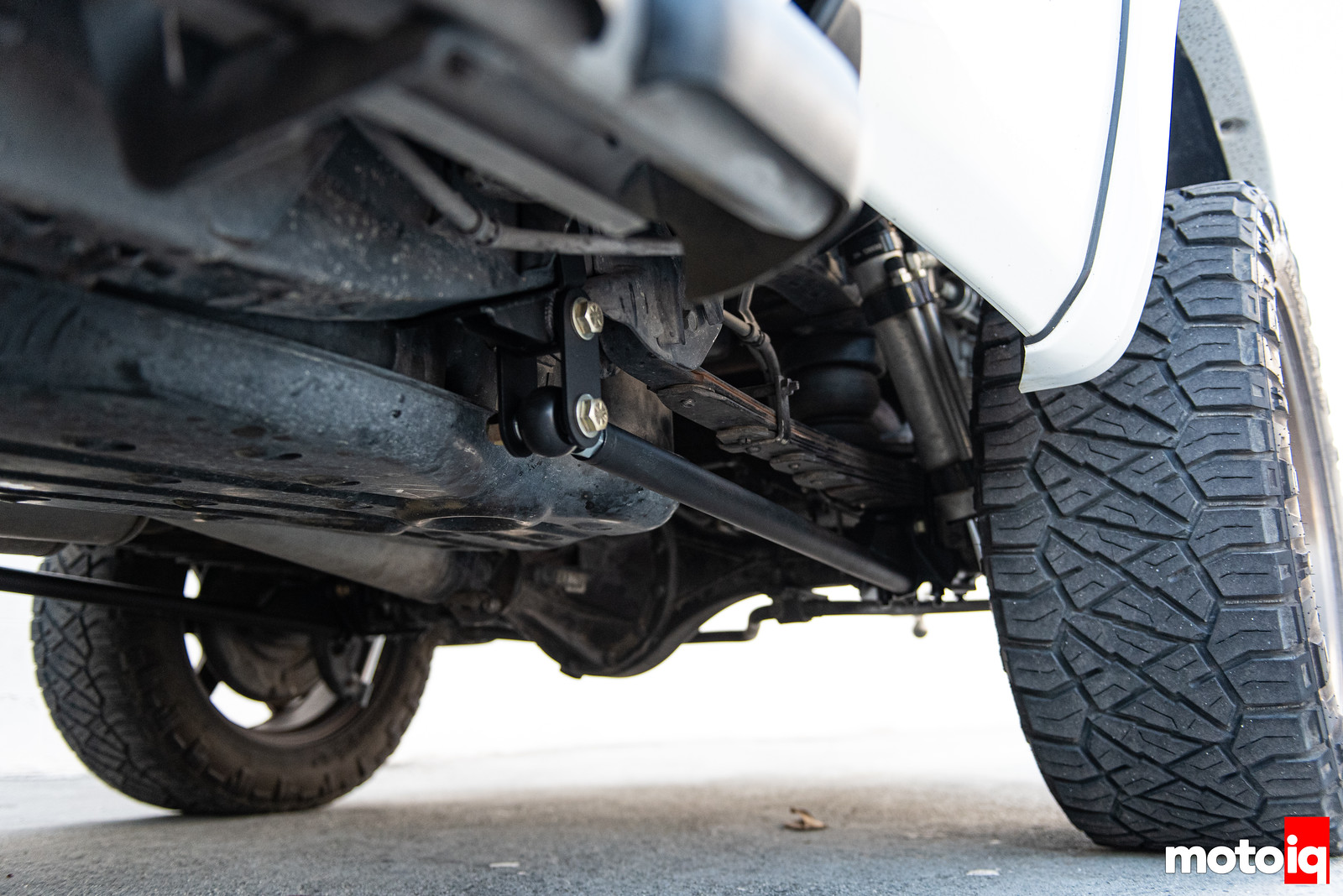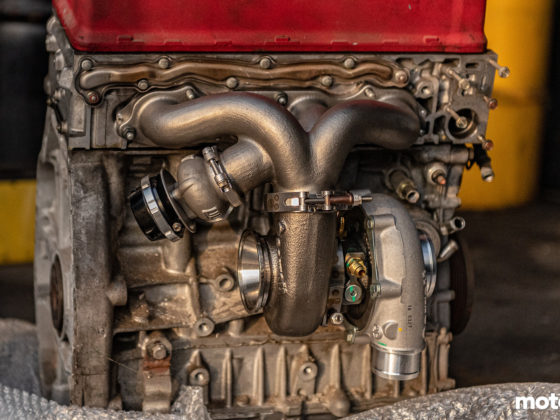
Here is the stock spring plate compared to the SDHQ spring plate/traction bar mount.

The SDHQ spring plate/traction bar mount would have bolted right in but our Hellwig air bag mounts lateral location bolts got in the way.

Our solution was to get rid of the bolts and weld the airbag mount to the axle tube. This was not that hard and only took a few minutes.

We left the main mounting bolts in place, got rid of the lateral bolts and welded the mounts on. Here is the weld before we painted it. Our truck uses the airbags because we use it for towing quite a bit.

The frame mounts for the traction bars bolt right in using existing holes so no fabrication was needed.

For the drivers side frame mount we had to move the gas tank out of the way to install all the bolts. We supported the gas tank, disconnected the fuel filler hose and the evap canister line. Then we undid the gas tank strap mounts and swung the tank out of the way to the right. This is easier if your tank isnt full of gas and heavy.




10 comments
The heim joint dust boots are great. A lot of New England area 240SX guys ran them on their adjustable arms back 10-15yrs ago. The only issue is that they also hold stuff in- unwanted debris still do find their way in. So it is a good idea to periodically check them- clean them out and keep them filled with fresh grease.
I had the heim boots on my Mustang for about 3 years and 40k miles, lived on a gravel road, never had an issue with them. I never filled it with grease tho so maybe thats the difference, grease does likes to catch debris…
for anyone wondering, I got mine from SealsIt.com
How are the traction bars with a double articulated forward mount doing any thing? Under load the axle would have to roll like 20 degrees before the forward bar mounts wold begin sucking up a fraction of the load due to the angle of the shackles. It looks more like the additional bump stops on the rear mount are doing more of the work to control axle roll than anything else.
The traction bars engage immediately. When the mount is adjusted correctly it is perpendicular to the force applied to it.
If you look at the 3rd picture on page 4 and use some imagination you can see that when the axle starts to twist the bump stop at the end of the bar will bind against the axle bracket turning the bar into a leaver arm that is trying to move vertically up. With the front swing bracket in a vertical position all the force is transferred vertically through the swing mount into the frame stopping axle twist. It could have been explained better, I had to go overt the pictures a few times to understand what is going on. But a very ingenious design!
Hi Mike,
In the 1980’s my friend in Seattle purchased a 1969 or 1970 Shelby King Cobra with 428. Factory roll bars, short 4sp straight cut gear box, radio and heater delete, koni adjustables. If I remembered correctly that car came with traction bars and the forward pickup was inboard. I think it also had a Panhard or Watts Link to prevent the rear axle from shifting side to side. I was told this was to control the leaf spring live axle.
He bought the car for less than $5,000 and sold it for less than $10K. He was not able to get a dual plate clutch that came in the car. He had difficultly getting parts for the huge Holley carb. He couldn’t get the dual points need for his distributor. It was an original Mustang raced by Shelby America in California. it raced less than one season. The fiberglass hood had huge numbers of naca ducts. He could not source the huge brake components. Imagine the price of that car today.
The Shelby bars were made by traction masters and they did not articulate but bolted solidly to the axle and the body. They had a lot of bind and although they stopped axle windup, they had a big negative effect on handling. On the other hand cars in those days did not handle too well.
Hi Mike, Jup, you’re right. Get leaf spring winding, live axle shaking side to side in the corners or suspension bind.
I don’t know if you remember, but in late 1980’s 1990, I was running a 1968 Firebird and 1969 convertible Firebird. The 400+ ci engines made so much torque. 1st fried the clutch, installed 3200 lbs ram clutch, which made your legs shake just to engage it. Then blew out the transmission syncro’s, u-joints and twisted the drive-shafts. I was still running the rubber donut sub-frame connectors, so the car looked all twisted, changed those to aluminum donuts. Beefed everything up then it torqued the leaf spring completely out of the chassis. That’s when I had Morrison and Al Green, build me some hidden traction bars attached to the top side (like the Chevelle SS and Ballard Springs rearc and put more spring in the leaf spring. I think I tried to put a panhard link, but that created evil handling with hidden top-side-triangulated traction bar.
Ha, ha, ha, old day racing. I worked for Good year, changing rubber after school, so got good price or free “Blue Dot” barely legal street racing tires. Lucky to get 1,000 miles out of those tires.
Love your stories, love the story about Dog Car. I remembered that car. I think that’s when we last met. I was working in Costa Mesa Ca. and drove up and down to San Fran. to meet friends and families. i also worked in Pittsburg Ca. and raced rent-a-car at Sears Point in 1980’s.
Hi Mike, That King Cobra have not been seen at any show for decades. It also came with Magnesium wheels, which SIR and PIR banned because of corrosion. He sourced some factory Aluminum King Cobra wheels. The tires were Goodyear Blue Dot (barely legal. The second owner told him Shelby America converted to street legal trim. Yet it had the most twisted headers. It seem like Shelby America took off the number plate and decals, then repainted the car and called it street legal. My friend licenced it in Seattle and drove it for many years until it needed repair and maintenance. It would be an interesting car to hunt down. The original factory and Shelby America build sheets were under the front seat carpeting.
That’s a cool history, that car is worth a fortune now!